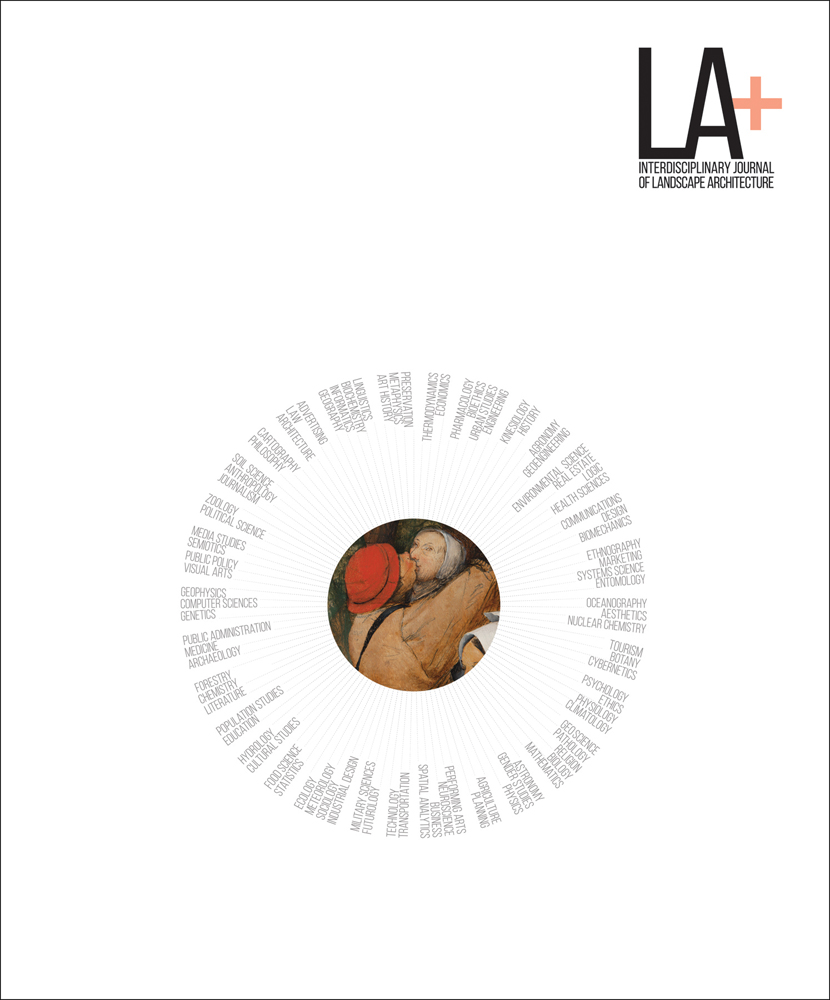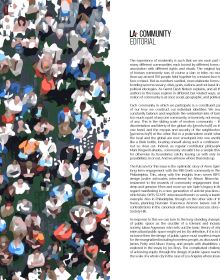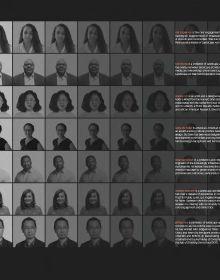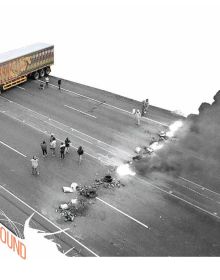LA+ Community
- Anne Whiston Spirn reflects upon her personal and professional journey through her long-term engagement with the Mill Creek community in the West Philadelphia Landscape Project
- Architect and cofounder of the DisOrdinary Architecture Project Jocelyn Boys discusses how designers and policy-makers make assumptions about the "ordinary user" of public space and explores ways of understanding and improving how people with disabilities engage with such spaces
- Historical geographer Garrett Dash Nelson contemplates the conceptual and practical slippages between understanding community in both its geographical and sociological forms, and what this means for designers seeking to give spatial form to the concept of community
- A multi-perspective Q+A with BIPOC designers, educators, and artists Kofi Boone, Julian Agyeman, Hanna Kim, Alma du Solier, Jeffrey Hou, Melissa Guerrero, and Kat Engleman confronts the enduring practices of spatial injustice and the need for new processes, engagement, and outcomes for a racially and culturally inclusive future
- Philosopher and author Mark Kingwell considers the literal ins and outs of the question “What is community?” in the midst of a global pandemic
- Landscape architect Kate Orff speaks about the ways in which she uses community activism and different practices of engagement to drive better design outcomes. Criminologists James Petty + Alison Young open our eyes to the rise of hostile architecture and criminalisation of homelessness in public space
- Designer Chrili Car reflects on lessons learned from working with a self-organised community in a remote village in northern Ghana to masterplan long-term local sustainability and greenbelt projects
- Ecologist Jodi Hilty, President and Chief Scientist of the Yellowstone to Yukon Initiative, speaks about the realisation of this visionary wildlife-corridor project spanning 3,200 km, two countries, and hundreds of different communities and interests.
- Historic preservationist and planner Francesca Russello Ammon teases out the contradictions in the canonical urban renewal success story of Philadelphia’s Society Hill
- Landscape architect Jessica Henson gives us the inside story on the intractably complex socio-political and ecological task of master planning a 51-mile swath of the Los Angeles River with a diverse range of user communities.
- Michael Schwarze-Rodrian recounts the extraordinary achievements of the Emscher Landscape Park in Germany’s Ruhrgebiet, where over the last 30 years a working-class community facing the trauma of transition to a post-industrial economy has been sustained by the medium of landscape, without the forms of displacement or gentrification typically associated with high-end greening.
- Urban planner and author of Just Sustainabilities Julian Agyeman elucidates what the culturally inclusive design of public space entails.
- Architect Mario Matamoros delivers a stinging critique of the way in which developers and designers in the Honduran city of Tegucigalpa dupe the public with cynical community consultation so as to anesthetise the possibility of dissent, and Sara Padgett Kjaersgaard interviews the CEO of the Federation of Traditional Owner Corporations, Paul Paton and landscape architect Anne-Marie Pisani about working with Indigenous communities in Australia to help facilitate self-determination and connection to their lands
Almost everything that landscape architects design is ultimately for a community. Community can be the boon or bane of a project, and oftentimes both. LA+ COMMUNITY aims to explore how, over time, each of us moves in and out of multiple communities, shaping them as they shape us, and in turn shaping our landscapes and cities. We ask how different disciplines construct different ideas of community and how those communities are anchored in space and time, whose interests they serve, and what traces they leave. And we examine how — in this pluralistic, fragmented, and fluid world — designers can meaningfully engage with communities. Contributions from:
- Anne Whiston Spirn reflects upon her personal and professional journey through her long-term engagement with the Mill Creek community in the West Philadelphia Landscape Project.
- Architect and cofounder of the DisOrdinary Architecture Project Jocelyn Boys discusses how designers and policy-makers make assumptions about the “ordinary user” of public space and explores ways of understanding and improving how people with disabilities engage with such spaces.
- Historical geographer Garrett Dash Nelson contemplates the conceptual and practical slippages between understanding community in both its geographical and sociological forms, and what this means for designers seeking to give spatial form to the concept of community.
- A multi-perspective Q+A with BIPOC designers, educators, and artists Kofi Boone, Julian Agyeman, Hanna Kim, Alma du Solier, Jeffrey Hou, Melissa Guerrero, and Kat Engleman confronts the enduring practices of spatial injustice and the need for new processes, engagement, and outcomes for a racially and culturally inclusive future.
- Philosopher and author Mark Kingwell considers the literal ins and outs of the question “What is community?” in the midst of a global pandemic.
- Landscape architect Kate Orff speaks about the ways in which she uses community activism and different practices of engagement to drive better design outcomes.
- Criminologists James Petty + Alison Young open our eyes to the rise of hostile architecture and criminalisation of homelessness in public space.
- Designer Chrili Car reflects on lessons learned from working with a self-organised community in a remote village in northern Ghana to masterplan long-term local sustainability and greenbelt projects.
- Ecologist Jodi Hilty, President and Chief Scientist of the Yellowstone to Yukon Initiative, speaks about the realisation of this visionary wildlife-corridor project spanning 3,200 km, two countries, and hundreds of different communities and interests.
- Historic preservationist and planner Francesca Russello Ammon teases out the contradictions in the canonical urban renewal success story of Philadelphia’s Society Hill.
- Landscape architect Jessica Henson gives us the inside story on the intractably complex socio-political and ecological task of master planning a 51-mile swath of the Los Angeles River with a diverse range of user communities.
- Michael Schwarze-Rodrian recounts the extraordinary achievements of the Emscher Landscape Park in Germany’s Ruhrgebiet, where over the last 30 years a working-class community facing the trauma of transition to a post-industrial economy has been sustained by the medium of landscape, without the forms of displacement or gentrification typically associated with high-end greening.
- Urban planner and author of Just Sustainabilities Julian Agyeman elucidates what the culturally inclusive design of public space entails.
- Architect Mario Matamoros delivers a stinging critique of the way in which developers and designers in the Honduran city of Tegucigalpa dupe the public with cynical community consultation so as to anesthetise the possibility of dissent, and Sara Padgett Kjaersgaard interviews the CEO of the Federation of Traditional Owner Corporations, Paul Paton and landscape architect Anne-Marie Pisani about working with Indigenous communities in Australia to help facilitate self-determination and connection to their lands.
- Publisher
- ORO Editions
- ISBN
- 9781954081000
- Published
- 18th Jun 2021
- Binding
- Paperback / softback
- Territory
- World excluding USA, Canada, Australasia & Asia (except Japan; China non-exclusive)
- Size
- 266 mm x 222 mm
- Pages
- 124 Pages
- Name of series
- LA+ Interdisciplinary Journal of Landscape Architecture
Distributed by ACC Art Books
Our Catalogues
Please log-in or create an account to see your recent items.






